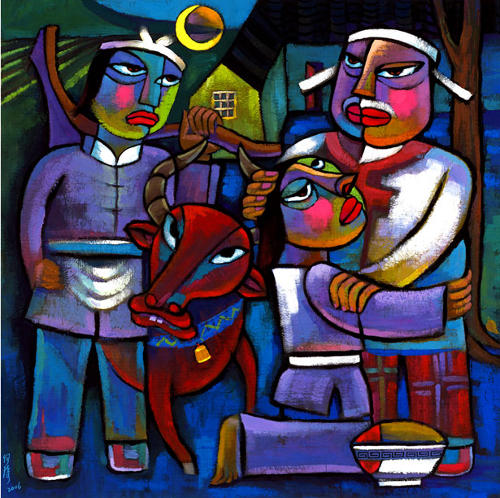At Ashmore Uniting yesterday we took a communal approach to the story commonly known as the “Prodigal Son”. Jesus’ parable is told in Luke 15 in the context of disapproval of his mixing with people of suspect character, the tax collectors (read collaborators with oppressive Rome) and sinners (read criminal class). It’s the story of a man who allows his son to leave with his inheritance and yet welcomes him back upon his return, dirtied, ruined and humbled.

We introduced the story with a reflection on the realities faced by many people who feel that the church is judgmental and exclusive. Why would that be? It only takes one person, whether that person be an official spokesperson or not, to establish an ongoing feeling of rejection. It could be a book, a sermon, a magazine article, as much as thoughtless comment that gives the message, “Don’t bother – you’re probably not wanted.” It often takes a community of people to overcome that sense of hurt.
We used “Ejector Pews“, one of the videos from the United Church of Christ advertising campaign in the United States, to remind us how much courage it takes to turn up at a church when you look or seem a little different. The “Still Speaking” campaign was used to position the USA denomination as place of welcome and inclusivity. Of course there were congregations who struggled to live up to the promise of being open to people of all kinds, no matter what stage of life, level of ability, ethnic background or sexual orientation. And there were people who felt that the call to inclusivity excluded them because of their belief that being “Biblical Christians” meant being intolerant of the gay and lesbian people.
Click on the image below to play the video in YouTube (HD)
We read the story of the Lost Son dramatically, and communally. We reflected on who else was in the story besides the father and two sons. Who were the women in the story? Their voices had been muted because they were not property holders in that patriarchal society. We examined the impact of one son taking half of the family income with him. As the extended family and wider community we became the ones whose livelihood had been put at risk, which meant that the son was in for a hiding if and when he returned. The son did return, and the patriarch needed to run to welcome the son before we got to him. The ensuing celebrations, despite the father’s welcome, were tempered by our realisation that accepting the son back on full terms meant that once again we had to bear the cost. Welcome and inclusion come at a cost.
Our questions for small group discussion focused largely on story. “When have you really felt welcomed?” We included a follow up question, “What can we learn from your experience?”
Music for the service once again had to come from outside the classic praise and worship menu. “Gather Us In”, by Marty Haugen, expressed the sense of being called to worship by the God who does not pay attention to the barriers we put up.
Gather us in the lost and forsaken
gather us in the blind and the lame;
call to us now, and we shall awaken
we shall arise at the sound of our name.
Gather us in the rich and the haughty
gather us in the proud and the strong
give us a heart so meek and so lowly
give us the courage to enter the song.
We used the Colin Buchanan memory verse, “Isaiah 53:6”, to connect with the Lost Sheep story. Good fun, led largely by the kids. “Come as you are”, by Deidre Brown, was used as we went to our small groups. The plan was to use it during the dramatic reading. I would have used Nirvana’s Come as you are in a more Gen X setting. “Take this moment”, the Iona Community song, was used during the offering. We reminded that we sing such songs to God, but also to each other. And the final song, “Amazing Grace”, took on deeper significance having explored what it meant to be a community of grace and new beginnings.
